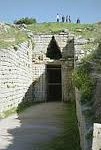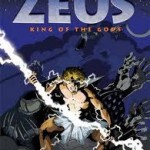The other day, I was riding the bus with a friend and the conversation turned to Wes Anderson. “I loved The Life Aquatic–at least, until the end,” my friend shared.
I was mildly shocked at this disavowal of one of my favorite movies. “How come?”
“It just ruined it for me,” she sniffed. “The movie should have ended five minutes earlier. It was just too over the top, too flashy, too loud…too unexpected.”
“Oh.” I thought over what she had said. “I used to agree with what you’re saying now, but the more I’ve thought about the film, the more I’ve realized how integral the end is to Anderson’s plot and what he’s exploring re. the framework of how we identify ourselves, the search for meaning and purpose, the cost of that search…I guess I think the ending is bittersweet, but not out of place in the slightest.”
That very same night, back in my apartment, I finished Asterios Polyp. As I processed the final pages, I swiftly realized my thoughts toward its ending were rather similar to my processing of Anderson’s comedy.

When that asteroid plummets towards earth, at first I was a bit shocked. Then I was amused–this is precisely how I used to finish off the stories I wrote in elementary school: with a bang, a flash, a conveniently placed atomic bomb–The End. Laziness aside, I was actually tapping into a long and respected literary convention. After all, similarly dire conclusions repeatedly seem to be the penultimate conclusions to all the problems of humanity’s own existence, regardless whether it’s a believer or a nonbeliever predicting the future (delusional utopian idealists aside, that is). I digress: the more I think about it, the more I think it would be a mistake to simply write off that asteroid in Asterios Polyp simply as a way to tie up loose plot threads.
Nor is it meant to be merely an ironic twist at the end of the narrative. “There are times when a beautiful image makes sense as good storytelling in ways that are not easily explained,” commented the author in an interview re. his artistic process. No, irony is too convenient, too cheap.
After all, this isn’t an unprecedented element in the plot. There is the slight matter of the titular character’s name, for starters. Just as importantly, and a bit like Steve Zissou’s opening encounter with the Giant Jaguar Shark, it takes a force of nature to shock Asterios (pun intended) into fresh action, early on in the story. That action is so very important throughout what happens next. And at least in my opinion, the action matters more than the causation (must be the humanist in me!) even as it is amplified and complicated through Mazzucchelli playing with huge meta-themes of freewill vs predestination via a long-lost twin, grecian myth, etc.

According to another friend of mine, Asterios Polyp is all about how we “order our lives according to particular structures,” certain frameworks of belief, different worldviews… I would agree; Mazzucchelli overtly plays with this by creating Asterios as an architect (more meta self awareness, of course!) And by the end, Asterios has engaged in a dramatic (perhaps even redemptive?) re-appraisal of the structures of his life. The resulting character growth is all the more poignant for its conclusion.
Yes, there are events that Asterios encounters that are far above and beyond his control. Call it fate, call it supernatural, call it nature–it matters not; in the end, “man knows not his days.” What does matter how Asterios conducts himself in the meantime–and it matters all the more for the uncertainty.
And yes, Mazzucchelli seems to think that we all have a choice in such conduct. Asterios is no Jimmy Corrigan–he is vastly more sympathetic and endowed with a great deal more agency.
Throughout the work, I think that Mazzucchelli posits that Asterios’ actions/structures do matter, both to himself and to the characters around him. I cannot help reading a very real sincerity–one that is, yes, bittersweet–in the character arc and in the ending.
Am I alone in this?
 While Greek and Roman themes are heavily referenced throughout this book, the most whimsical mythic icon appears to the left. It is a section of the Cyclopean walls, still extant in Greece and Italy. While not the circular face with two cut -out arcs of Asterios, the center stone in the middle column, middle row does mimic in style and ‘humanity’ the protagonists’ image and demeanor.
While Greek and Roman themes are heavily referenced throughout this book, the most whimsical mythic icon appears to the left. It is a section of the Cyclopean walls, still extant in Greece and Italy. While not the circular face with two cut -out arcs of Asterios, the center stone in the middle column, middle row does mimic in style and ‘humanity’ the protagonists’ image and demeanor. the central suspense depends on the difference between flat and round characters and the believability that round characters must embody to produce tension, and hence, a book worth reading. We have the story of an architect (with one effective eye) who never built any structures compared to the Cyclopes race and members of a Tracian tribe of skillful architects who built the Cyclopean walls of “unhewn polygons, sometimes 20 or 30 feet in breadth” (Dictionary of Greek and Roman Biography and Mythology).
the central suspense depends on the difference between flat and round characters and the believability that round characters must embody to produce tension, and hence, a book worth reading. We have the story of an architect (with one effective eye) who never built any structures compared to the Cyclopes race and members of a Tracian tribe of skillful architects who built the Cyclopean walls of “unhewn polygons, sometimes 20 or 30 feet in breadth” (Dictionary of Greek and Roman Biography and Mythology). book on the proper note of released tension.
book on the proper note of released tension.


